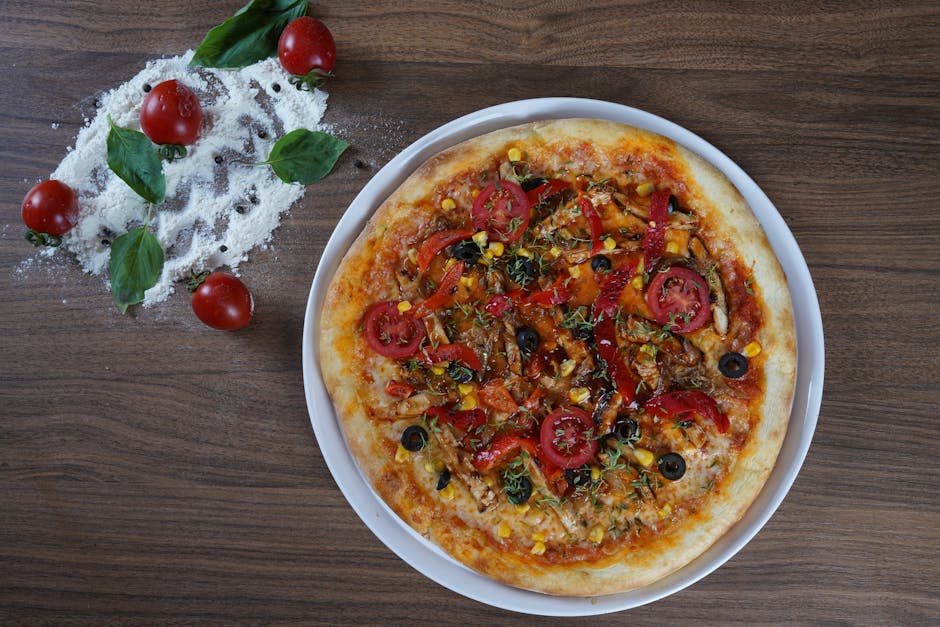
There’s something magical about pulling a steaming hot Neapolitan pizza from your own oven-the delicate leopard spots on the crust, the aroma of tomatoes and basil, and that chewy, airy bite. While it seems like pizza mastery belongs to pizzerias in Naples, with the right technique, anyone can achieve authentic results at home. At Best Pizza Ovens, we obsess over every detail, from choosing the right flour to understanding why temperature and timing matter so much. Here’s our complete, no-nonsense guide for pizza enthusiasts who want to make true Neapolitan pizza-no shortcuts, and plenty of tips for real success.
1. The Foundation: Ingredients and Dough Science
Real Neapolitan pizza starts-and often ends-with the dough. Simplicity is key, but every detail counts:
- Flour: Use high-quality Italian “00” flour if possible. Its fine milling and gluten content (11–13%) ensure that signature chew and light, crisp rim.
- Water: Go for filtered or spring water if your tap water tastes harsh. Hydration for home baking sits around 60–65% (that’s 600-650g water per 1kg flour). This makes for an extensible, moist dough that’s still easy to handle.
- Salt: Use sea salt, about 2.8–3% of flour weight.
- Yeast: A tiny bit goes a long way-just 0.2–0.3% (2-3g) of fresh yeast for every kilo of flour. If using dry yeast, half as much works well.
Secret from the Pros: Always dissolve salt in the water first, incorporate a little flour, then yeast. This keeps the yeast healthy and active. Mix until you get a porridge consistency before adding the rest of the flour.

2. Mixing, Kneading, and Timing: The Heartbeat of Neapolitan Dough
There’s only one way to get the structure and flavor that makes Neapolitan pizza special: gentle yet thorough kneading, and patient fermentation. Here’s our approach:
- Mixing: Dissolve salt in water, then add about 10% of your flour to make a slurry. Sprinkle in the yeast. Gradually add the rest of the flour until the dough comes together.
- Kneading: Knead by hand for 15–20 minutes. The dough should be smooth, elastic, and slightly tacky but not sticky. If mixing by machine, finish the last few minutes by hand for best texture.
- Dough Temperature: Target 23–26°C (73–79°F) right after kneading-this is crucial for ideal fermentation.
- Bulk Fermentation: Let the dough rest for about 2 hours at room temperature, covered.
- Balling: Divide into 230–260g portions. Shape into tight balls, tuck the edges underneath, and roll gently on the counter so they have a taut surface.
- Cold Proof: Cold ferment balls in a sealed tray or individual containers in the fridge for 24–72 hours. This develops flavor and gives an airy, extensible dough.
- Warming Up: Bring balls to room temperature at least 3 hours before baking. This relaxes the gluten and prevents tearing.
We recommend experimenting with 24, 48, and 72-hour cold proofs. You’ll notice remarkable differences in flavor depth, aroma, and overall crust structure. The wait is truly worth it.
3. Shaping: No Rolling Pins Allowed
This is where your work pays off-and where many home cooks go wrong. Neapolitan pizza should be:
- Thin in the center (under 0.25cm) with a robust, puffy rim (cornicione) for that glorious oven spring.
- Generously flour your countertop with 00 flour or very fine semolina.
- Tip a dough ball onto the counter, flour the top, and gently press out from the center with your fingertips, leaving a 1.5–2cm border. Rotate as you press, preventing the rim from deflating.
- Pick up the dough by the edge; drape over your knuckles and gently stretch out to about 12 inches diameter, letting gravity help.
- If the dough elasticity resists or shrinks back, cover and rest for 5–10 minutes, then resume.

4. Sauce & Toppings: Restraint Is Everything
Real Neapolitan pizzas are about letting every element shine-so keep toppings minimal:
- San Marzano tomatoes: Hand-crush or pass through your fingers for a slightly chunky, fresh sauce. Don’t overblend. One thin layer per pie.
- Fresh mozzarella: Use fior di latte or buffalo mozzarella, torn or sliced in clumps. Blot if wet.
- Fresh basil: A few leaves per pizza (add before baking for aroma and a toasted touch).
- Extra-virgin olive oil: Drizzle in a spiral before baking or right out of the oven.
- Optional: A sprinkle of Parmigiano Reggiano over the sauce adds umami, but don’t overload it.
Tip: Less is more-heavy toppings will overwhelm the delicate dough and lead to sogginess. Master restraint.

5. High Heat: The Make-or-Break Factor
This step is non-negotiable: authentic results require high, even heat and a speedy bake.
- Classic: Wood-fired ovens hit 430–480°C (800–900°F) and cook pizza in 60–90 seconds. The rapid rise and crisping is why those pies are so unique.
- At Home: We recommend using a dedicated pizza oven for best results. Top outdoor models, like the Ooni Koda 16, Gozney Dome, or Ooni Karu 16, reliably hit those temperatures for authentic Neapolitan baking. See our Ultimate Guide to the Best Pizza Ovens in 2025 for detailed recommendations.
- Conventional Oven: Use a thick pizza stone or steel, preheat for 45–60 minutes at your oven’s max (250–290°C/482–554°F). Place stone close to the broiler and preheat the broiler for an extra kick. Your bake time will increase to 4–8 minutes, and rotating once or twice during cooking helps balance browning.
If you’re serious about Neapolitan pizza, a high-temp outdoor oven is the ultimate upgrade. But don’t give up-great flavor and crust is possible with patience and proper techniques, even indoors.
6. Finishing, Slicing, and Serving
- Once your pizza’s crust is puffed, with those signature charred spots, and cheese is bubbling and just colored, it’s ready.
- Use a super-sharp pizza wheel or kitchen shears to cut-dragging will ruin the structure.
- Serve immediately. Neapolitan pizza is at its best fresh, eaten within minutes of coming out of the oven.
Remember, testing different fermentation times and flours will help you nail the perfect flavor and texture for your style.
Frequently Asked Questions (FAQ)
- Can I use regular flour instead of 00? You can, but you’ll get a different texture. “00” flour is softer and makes stretchier, silkier dough. For best results, source authentic pizza flour.
- Why does Neapolitan pizza require such high heat? The intense heat causes a rapid rise, crisping and caramelizing the edge while keeping the center incredibly tender.
- Do I need special equipment? At minimum, use a pizza stone or steel and a peel. For next-level results, consider a dedicated pizza oven that reaches 800°F+. We review the leading models here.
- Can I prepare dough in advance? Yes! Cold fermentation for up to 72 hours increases flavor and digestibility.
Summary: Bring Napoli to Your Kitchen
Every element-dough, fermentation, shaping, topping, and heat-matters when you’re chasing pizza perfection. Trust us, the journey is equal parts science, skill, and magic. We love hearing about your successes and experiments. If you’re hungry for more depth (and details about top pizza ovens for authentic results), check out our thorough reviews and guides at Best Pizza Ovens.
There’s nothing quite like a truly authentic Neapolitan pizza, made by your own hands and perfectly baked at home. Good luck, and buona pizza!
